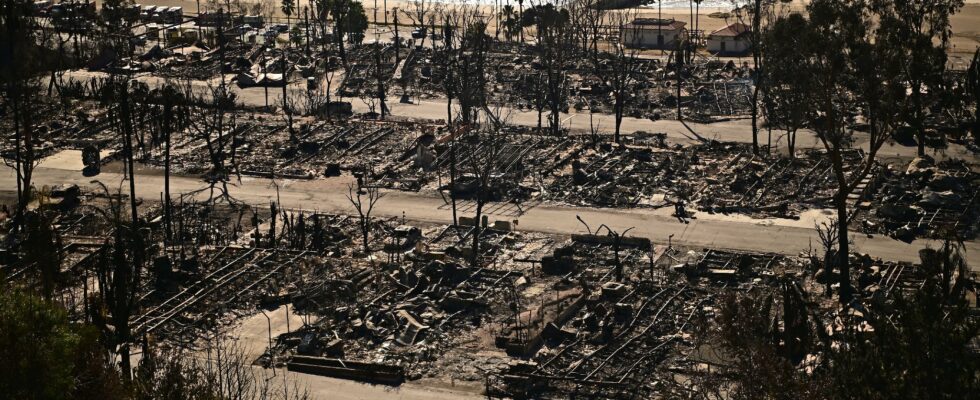The contrast is quite striking in the Palisades neighborhood of Los Angeles. On one side, houses reduced to ashes, on the other, the shopping center, Palisades Village, which houses the biggest luxury brands, completely intact. Its owner, Rick Caruso, explained At New York Times having called on a private fire company from the State of Arizona to save his business.
As of January 20, the city of angels had 27 fire victims and more than 12,000 buildings destroyed. The few structures that have survived, such as Palisades Village, almost stand out from the city’s hills. For the New York Times, the intensity of these fires raises a central question: “Could the municipality not have recruited additional firefighters more quickly, which would have limited the spread of the fires?”
Some, like Rick Caruso, did not wait for the city to make a decision and therefore turned to private fire departments tasked with monitoring private properties. Southern California, one of the richest regions of the country, is where these private forces have been in greatest demand. According to the New York Timesprivate firefighters supervise the surveillance of villas, whose owners are ready to pay $3,000 per day depending on the company to ensure the protection of their property, the amount can rise to $10,000 per day for a team of 20 firefighters from the private firefighting company, Grayback Forestry.
“Private companies are not trained or equipped for this”
A phenomenon which fuels “major ethical questions”, according to National Public Radio (NPR). According to THE Los Angeles Timesthe anger of local residents rose after a publication on the X platform by Keith Wasserman, co-founder of a real estate investment agency in the region: “Does anyone have the contact of a private fire agency? […] I can pay any price.” Quoted by Los Angeles TimesDavid Torgerson, founder of a private fire company, nevertheless affirms that contracts with individuals remain in the minority. Most of the actions carried out by these private companies – from which 45% of firefighters today deployed in the United States come – are done in collaboration with the government, according to the New York Times.
The American daily highlights that demand for private firefighting services has increased sharply in recent decades, as forest fires have intensified. The strong reactions of Californian residents pushed the State of California to adopt a law in 2018 which regulates this sector and limits its room for maneuver. Thus, these companies no longer have the right to use flashing lights or badges similar to those of the city’s firefighters. Since the passage of this law, several companies like Mt. Adams Wildfires have stopped offering their services to individuals.
Water management is a major issue in the crisis that California is going through and also one of the main subjects of tension among residents of Los Angeles. As explained to us the magazine Timeshortly after the fires started on January 7, the fire hydrants, to which the city’s firefighters have access, were dry. “Extreme demand has caused a slowdown in the filling rate of these tanks, which has created a challenge for our firefighting efforts,” Erik Scott, communications manager for the fire department, said on January 8 from Los Angeles. Private companies ensure that they draw water from nearby lakes and ponds, or use water from residents’ swimming pools.
In an interview given to New York TimesBrian Rice, president of California Professional Firefighters, said: “We do not view these groups as an asset […]. The firefighting going on in Los Angeles right now is an urban firefight. […]. Private companies are not trained or equipped for this.” Despite criticism of the use of these private firefighters, David Torgerson tells NPR: “It is better to have more resources. It is preferable that this is not done to the detriment of the taxpayer or the insured. It’s better if more structures survive.”
